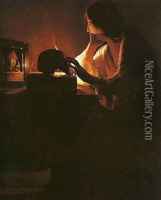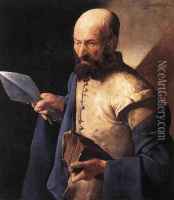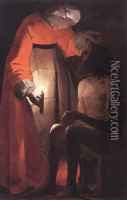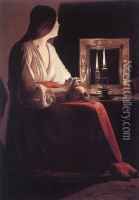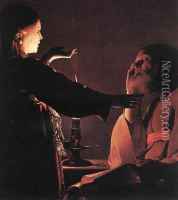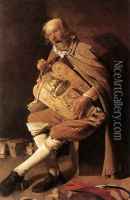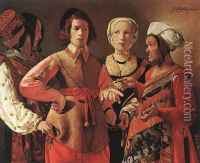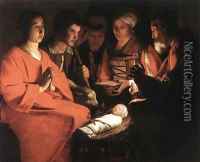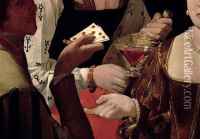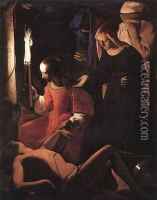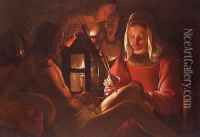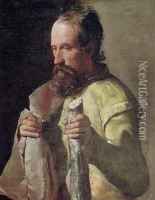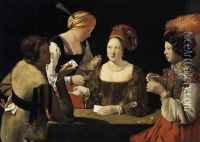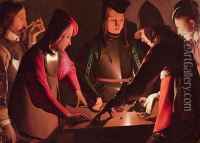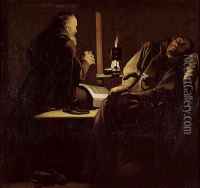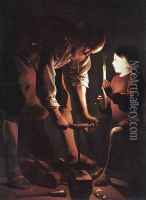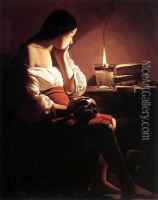Georges de La Tour Paintings
Georges de La Tour was a French Baroque painter who is known for his masterful use of chiaroscuro—the interplay of light and shadow. Born on March 13, 1593, in the town of Vic-sur-Seille in the Duchy of Lorraine, La Tour's early life and training are not well documented, but it is believed that he was influenced by the works of Caravaggio, whose style had a significant impact on European painting at the time.
La Tour's oeuvre can be divided into two main periods. His earlier works often depicted violent night scenes influenced by Caravaggio's dramatic lighting, but as his style developed, he began to create more serene and contemplative nocturnal scenes, often featuring religious subjects. His paintings are characterized by their simplicity, use of stark contrasts between light and dark, and the quiet, reflective nature of the figures depicted.
Despite his talent, La Tour was not widely known outside of Lorraine during his lifetime. He was appointed as 'Painter to the King' (Louis XIII) in 1639, which granted him a regular pension. His patrons included both the local bourgeoisie and the nobility, for whom he painted religious images and genre scenes.
La Tour's work fell into obscurity after his death in Lunéville on January 30, 1652. It was not until the early 20th century that his art was rediscovered, and he was subsequently celebrated as one of the most important French painters of the 17th century. Today, his paintings are highly regarded for their poetic use of light and are held in major museums around the world. Modern audiences often appreciate La Tour's ability to evoke emotion through the quiet intensity of his figures and the subtle interplay of light and shadow.
